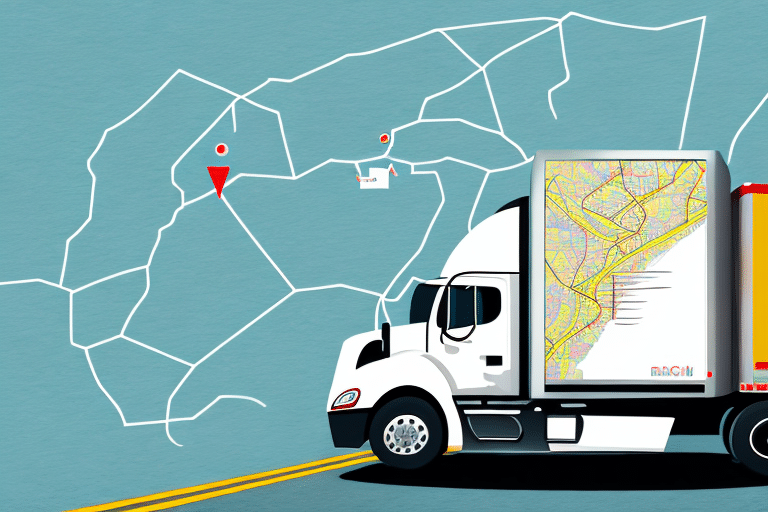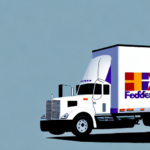Understanding UPS LTL Shipping
Less Than Truckload (LTL) shipping is a cost-effective method for transporting smaller freight that doesn't require a full truckload. UPS offers comprehensive LTL services tailored to businesses of all sizes, ensuring efficient and reliable delivery of goods.
What is LTL Shipping?
LTL shipping involves consolidating shipments from multiple customers into a single trailer. Each shipper pays only for the portion of the trailer their freight occupies, making it a more economical choice compared to full truckload shipping. This method is ideal for businesses with shipments ranging from 150 to 15,000 pounds.
How Does UPS Handle LTL Shipping?
UPS leverages its extensive nationwide network and advanced logistics technology to manage LTL shipments. Goods are collected from the sender, transported to regional hubs, consolidated with other shipments, and then delivered to the final destination. This streamlined process minimizes transit times and enhances delivery reliability.
Transit Times in UPS LTL Shipping
Understanding transit times is crucial for effective supply chain management and customer satisfaction. UPS provides estimated transit times based on various factors to help businesses plan their operations efficiently.
Importance of Transit Times
Transit times influence inventory management, customer expectations, and overall business operations. Reliable transit estimates enable businesses to maintain optimal stock levels and ensure timely deliveries, thereby enhancing customer trust and satisfaction.
How UPS Calculates Transit Times
UPS utilizes sophisticated algorithms and routing technologies to determine the most efficient paths for LTL shipments. Factors such as origin and destination locations, shipment weight and dimensions, and current network capacity are all considered to provide accurate transit time estimates.
Factors Affecting UPS LTL Transit Times
Several variables can impact the transit times of UPS LTL shipments. Understanding these factors allows businesses to mitigate potential delays and optimize their shipping processes.
Distance and Location
The geographic distance between the shipment's origin and destination plays a significant role in determining transit times. Additionally, shipments heading to or from remote or underserved areas may experience longer transit periods.
Type of Freight
Certain types of freight, such as hazardous materials or oversized items, require special handling and permits. These requirements can extend transit times due to additional safety protocols and routing considerations.
Weather and Traffic Conditions
Adverse weather conditions and traffic congestion can cause unexpected delays. UPS continuously monitors these factors to adjust routes and schedules, ensuring timely deliveries whenever possible.
Optimizing Your UPS LTL Shipping Process
Implementing best practices in your LTL shipping process can lead to significant improvements in efficiency, cost savings, and transit times.
Tips for Managing Transit Times
- Consolidate Shipments: Grouping multiple shipments can reduce costs and optimize trailer space.
- Accurate Documentation: Ensure all shipping information is correct to prevent delays.
- Choose the Right Service Level: Select expedited or guaranteed services when faster transit is essential.
Improving Shipping Efficiency
Utilize UPS's online tools for scheduling pickups, tracking shipments, and managing invoices. Effective use of these resources can streamline your shipping operations and provide real-time visibility into your shipments.
Benefits of Using UPS LTL Shipping
UPS LTL shipping offers numerous advantages that cater to the diverse needs of businesses:
- Cost-Effective: Pay only for the space your shipment occupies.
- Reliable Transit Times: Benefit from UPS's robust logistics network and advanced tracking systems.
- Nationwide Coverage: Access a comprehensive network that spans across the United States.
- Advanced Tracking: Monitor your shipments in real-time for enhanced supply chain visibility.
- Flexible Options: Choose from various pickup and delivery services to suit your business needs.
Common Questions About UPS LTL Transit Times
Businesses frequently have inquiries regarding UPS LTL transit times. Below are answers to some of the most common questions:
1. What is the average transit time for UPS LTL shipments?
UPS LTL transit times typically range from two to five business days, depending on the distance and service level selected.
2. Can I choose a specific pickup or delivery time for my LTL shipment?
Yes, UPS offers flexible pickup and delivery options, including appointment-based services and weekend pickups, to accommodate your schedule.
3. Does UPS offer expedited LTL shipping options?
Absolutely. UPS provides expedited LTL shipping for urgent or time-sensitive shipments, ensuring faster delivery times when needed.
4. How can I track my LTL shipment using UPS?
You can track your shipment through the UPS Tracking tool by entering your tracking number or reference number.
5. What are the weight and size restrictions for UPS LTL shipments?
UPS LTL shipments can weigh up to 20,000 pounds and have a maximum length of 28 feet. Specific restrictions may vary based on the destination and shipment type.
6. Does UPS provide insurance for LTL shipments?
Yes, UPS offers basic liability coverage for LTL shipments. Businesses can also purchase additional insurance for enhanced protection.
7. Can I request special handling for my LTL shipment?
Yes, UPS provides special handling services such as liftgate delivery, inside delivery, and hazardous materials handling, subject to additional fees.
8. What is the process for filing a claim for a lost or damaged LTL shipment?
If your shipment is lost or damaged, you can file a claim through the UPS Claims process. Ensure you provide all necessary documentation to facilitate the investigation and resolution.
Future Trends in UPS LTL Shipping
The landscape of LTL shipping is evolving with advancements in technology and logistics strategies. UPS is at the forefront of these changes, implementing innovations that enhance efficiency and reliability.
AI-Powered Logistics Solutions
UPS is investing in artificial intelligence to optimize routing, predict transit times more accurately, and improve overall supply chain management.
Robotic Process Automation
Automation technologies are being integrated into UPS's operations to streamline processes, reduce manual errors, and accelerate shipment handling.
Data Analytics
Leveraging big data, UPS can analyze shipment patterns, forecast demand, and make informed decisions to enhance service offerings and operational efficiency.
Expansion of Network and Partnerships
UPS continues to expand its network and form strategic partnerships to reach new markets, offering more flexible and customized shipping solutions to meet the growing demands of businesses.
In conclusion, understanding UPS LTL transit times is vital for optimizing your shipping processes and ensuring customer satisfaction. By utilizing UPS's advanced services and staying informed about industry trends, businesses can enhance their logistics strategies and achieve greater operational success.






















